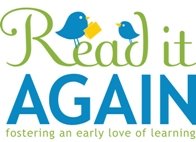“Developmentally Appropriate”
1. What does "developmentally appropriate" mean in the context of teaching preschoolers to read?
"Developmentally appropriate" refers to teaching practices aligned with how children learn and develop at various ages and stages, considering their individual differences and the context of their societal, community, family, and cultural values. It means ensuring that learning activities are suitable for a child's current cognitive, emotional, and physical abilities, minimizing stress and maximizing engagement. It is important to remember that what is "developmentally appropriate" varies greatly from child to child.
2. Why is it important to consider "developmentally appropriate practices" when teaching preschoolers?
Using developmentally appropriate practices is crucial to minimize stress on the child. When children are taught in a way that doesn't align with their natural learning styles or readiness, it can cause unnecessary stress that can interfere with their development. This stress arises when children feel pressured to conform to expectations that contradict their natural instincts and abilities, potentially hindering their learning process.
3. How does "developmentally appropriate" vary from child to child, and what factors contribute to these differences?
What's developmentally appropriate differs because children develop at varying rates and in diverse contexts. Factors include neurodivergence, family involvement in education, and socioeconomic status. For instance, a neurodivergent child's brain develops differently compared to a neurotypical child. Children from families actively involved in their education tend to develop better language skills. Moreover, poverty can negatively impact a child's brain development and cognitive abilities.
4. Why is it problematic to make sweeping generalizations about whether reading is "developmentally inappropriate" for all children under a certain age?
Claiming that learning to read is "developmentally inappropriate" for all children up to a certain age is a broad generalization that disregards the individual differences in children's development. It doesn't account for the fact that children reach developmental milestones at different times. Factors like genetics, environment, and access to resources play a significant role in a child's readiness to learn.
5. How can parents ensure they are teaching reading in a "developmentally appropriate" way?
Parents can ensure they're teaching reading in a developmentally appropriate way by focusing on how they teach, rather than simply when. Key factors include avoiding forcing a child to sit still for extended periods and incorporating play into learning activities. Play-based learning keeps kids engaged and makes the process fun and interactive, aligning with their natural learning styles.
6. What role does play have in teaching preschoolers to read?
Play is a highly effective method for teaching children, including reading. It engages them in dynamic, multi-sensory, interactive, and imaginative activities that spark intrinsic motivation. Play fosters reading ability and sustains their interest in reading and literacy by making the learning process enjoyable and less stressful.
7. What are some teaching methods to AVOID when teaching a preschooler to read?
Avoid methods that involve forcing a child to sit still for long periods or using "drill and kill" activities (rote memorization). These methods can be stressful and counterproductive for young children. Instead, focus on engaging, playful, and interactive activities that align with their natural learning styles.
8. Does the source advocate that parents should or should not teach their preschooler to read?
The source does not advocate for or against teaching a preschooler to read. It emphasizes that the decision is ultimately up to the parent, based on what they believe is best for their child. The source focuses on addressing concerns about developmental appropriateness and provides guidance on how to teach reading in a way that is engaging and enjoyable for young children, should a parent decide to pursue it.

